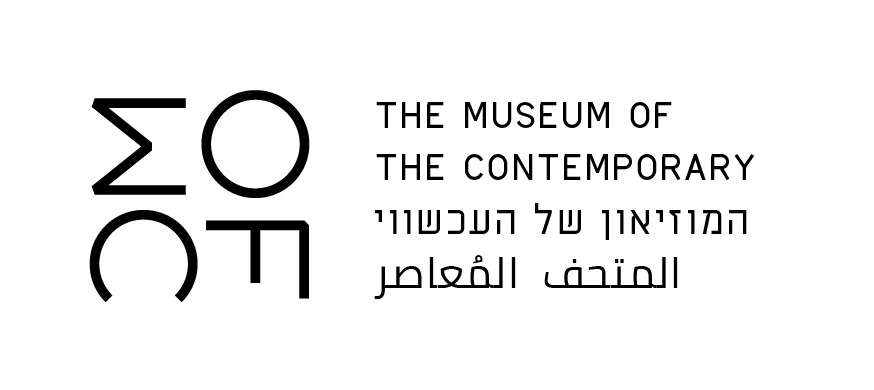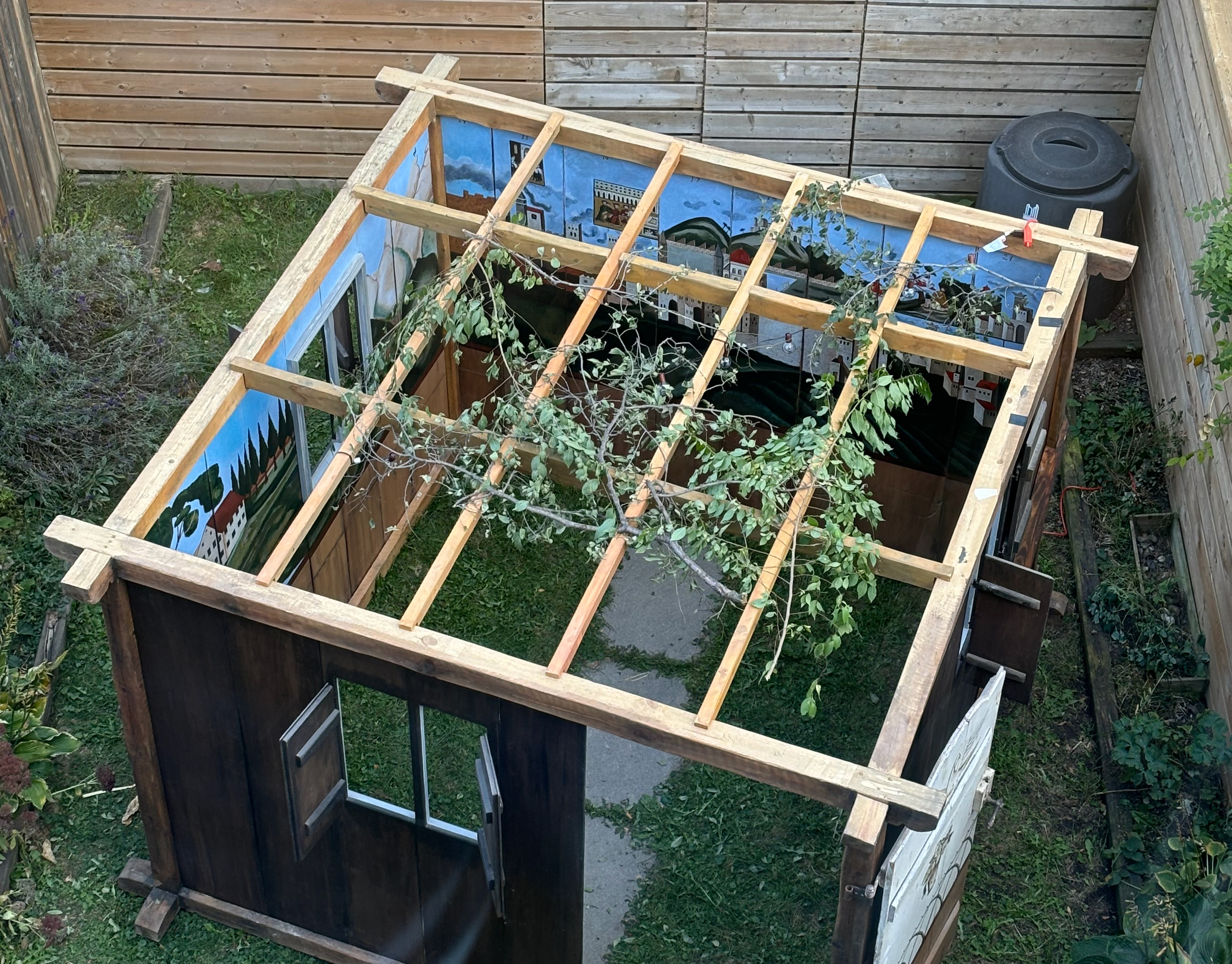Kri'at Shma (Tearing up her name)
(Poster intervention, Hebrew University Mt. Scopus Campus is & Hansen House
(Hebrew version at the end)
n 2007, the Israel Museum reprinted Ze’ev Raban’s poster “Come to Palestine” (1929). In February 2023, a reproduction of the poster—hanging on the door of the office of the head of the art history department at the Hebrew University of Jerusalem—was anonymously defaced in a precise, almost surgical manner: the word “Palestine” was cut out by hand.
In response to this act of vandalism, the Sala-Manca Group documented the damage in a poster featuring a photo of the door and the torn image. The new poster, while criticizing the erasure, deliberately provokes the public—compelling each viewer to confront the symbolic absence and actively complete it in their mind by adding the missing word: “Palestine.”
In response to this act of vandalism, the Sala-Manca Group documented the damage in a poster featuring a photo of the door and the torn image. The new poster, while criticizing the erasure, deliberately provokes the public—compelling each viewer to confront the symbolic absence and actively complete it in their mind by adding the missing word: “Palestine.”
[Larger text]
In 2007, the Israel Museum reprinted Ze'ev Raban's poster "Come to Palestine" (1929). One of those reproductions has hung for many years on the office door of the head of the Art History Department at the Hebrew University of Jerusalem, Mount Scopus. At the beginning of February 2023 it was defaced in an aonymous vandalistic yet precise, almost surgical, intervention: the word "Palestine" was manually cut out. The erasure of the word from the poster reveals just how threatening the word "Palestine" is today in the Isreli public sphere. An invitation "to the unknown" remains on the poster. As a response to the act of vandalism, the Sala-Manca Group photographed in March 2023 the defaced poster and created a new poster that includes a photo of the door and the poster with the word torn out of it. The new poster, printed by the "Museum of the Contemporary," that same month was offered to faculty members at the Mount Scopus campus to hang on their doors as an act of echoing and reflection on this act of erasure. The new poster, while criticizing the erasure, deliberately provokes the public—compelling each viewer to confront the symbolic absence and actively complete it in their mind by adding the missing word: “Palestine.”
This intervention invites us to interpret the action as a physical and symbolic erasure of a specific name and national idea from the Israeli public space, except that the "Palestine" referred to in the original poster by Raban, a Zionist Jew, was Mandatory Palestine/Eretz Israel, and the invitation on the poster was intended to promote tourism by both Christians and Jews in the Holy Land. Raban's style, called "Hebrew Symbolism," was influenced by the European Art Nouveau movement and combined biblical, Eretz Israel, and Orientalist motifs. Below the main image on the poster is a quote from the Song of Songs. It reflects the ideas of the historical Zionist movement, which connected the present of the Jewish people to the biblical past through the mediation of the territory.
Erasing visual elements perceived as threatening (women's faces, the Arabic language, religious symbols) from the public space is a widespread vandalistic phenomenon in Israel. The targeted erasure of the word from the door of Professor Ventura's private office emphasizes not only the deliberateness and severity of the act but also the ignorance underlying it, revealing just how threatening the word "Palestine" is today.
An invitation "to the unknown" remains on the poster hanging on the door of the head of the Art History Department. However, filling in the missing by reading the poster is not difficult (this is a well-known artistic tactic in the days of censorship). The tearing of the poster takes place during the days of heated debate about the future of the State of Israel as a democracy and at a time of deep rift, both in relations between Jews and Palestinians and in intra-Jewish discourse between those who support the legal reform and those who oppose the regime change implied by this reform.
As a response to the act of vandalism, the Sala-Manca Group photographed the defaced poster and created a new poster that includes a photo of the door and the poster with the word torn out of it. The new poster, printed by the "Museum of the Contemporary," was offered to faculty members at the Mount Scopus campus to hang on their office doors as an act of echoing and reflection and perhaps as a new artwork. After the new poster was hung on the door of the head of the Theater Department, it was photographed, and the photo served as the basis for a third poster, documenting the action of reverberation, as a mise-en-abyme or an endless play of mirrors.
After Ze'ev Raban, Come to (Poster 2023). Photograph of Ze'ev Raban, Come to Palestine (Poster 2007) with a word ripped off by anonymous vandals, from the office door of Prof. Gal Ventura, Head of the Art History Department. Hung on the office door of Dr. Diego Rotman, Head of the Theater Studies Department, Hebrew University of Jerusalem, Mt. Scopus. Februray 2023.
קריעת שְמה
ב-2007 הדפיס מוזיאון ישראל מחדש את כרזתו של זאב רבן ״Come to Palestine״ (מ-1929), שנמצאת באוסף המוזיאון והייתה חלק מתערוכה היסטורית שהוצגה בו באותה שנה. הכרזה הייתה תלויה שנים רבות על דלת משרדה של פרופ׳ גל ונטורה, ראש החוג לתולדות האמנות באוניברסיטה העברית בהר הצופים בירושלים. בתחילת פברואר 2023 היא הושחתה כתוצאה מהתערבות ונדליסטית אך מדויקת, כמעט כירורגית: קריעה ידנית של המילה "Palestine", ללא פגיעה ביתר הכרזה. זו הייתה מחיקה מכוונת של חלק מההיסטוריה החזותית המקומית. Palestine נתלשה בידי אלמוני.
התערבות זו מזמינה לפרש את הפעולה כמחיקה ממשית וסימבולית של שם ורעיון לאומי מהמרחב הציבורי הישראלי, אלא ש״Palestine״ שבכרזה המקורית הייתה ייצוג של פלשתינה-א"י המנדטורית בידי יהודי ציוני, וההזמנה אליה נועדה לקדם תיירות של נוצרים ויהודים כאחד בארץ הקודש. סגנונו של רבן, שכונה "סימבוליזם עברי", הושפע מתנועת אר נוּבו האירופית ושילב מוטיבים תנ"כיים, ארצישראליים ואוריינטליסטיים. מתחת לדימוי העיקרי בכרזה מופיע ציטוט מתוך שיר השירים, והיא משקפת את הרעיונות של התנועה הציונית ההיסטורית, שחיברה בין ההווה של העם היהודי לעבר התנ"כי בתיווך הטריטוריה.
מחיקה של גורם הנתפס כמאיים (פנים של נשים, השפה הערבית, סמלים דתיים) מהמרחב הציבורי היא תופעה ונדליסטית רווחת. התרחשותה של המחיקה בתוך כותלי האוניברסיטה, על דלתה של ראש החוג לתולדות האמנות, מדגישה גם את חומרת הפעולה וגם את בורות המבצע וחושפת עד כמה מאיימת היום המילה "פלסטין". על הדלת של ראש החוג לתולדות האמנות נותרה הזמנה אל הלא נודע, אם כי מילוי הנעלם בקריאת הכרזה אינו קשה (זוהי טקטיקה אמנותית ידועה בימים של צנזורה). קריעת הכרזה מתקיימת בימים של דיונים סוערים על עתידה של מדינת ישראל כדמוקרטיה ובתקופה של קרע עמוק בחברה, הן ביחסים בין יהודים לפלסטינים והן בשיח פנים-יהודי בין אלו התומכים ברפורמה המשפטית לאלו המתנגדים לשינוי המשטרי המשתמע מרפורמה זו.
כתגובה לפעולה הוונדליסטית צילמה קבוצת סלה-מנקה את הכרזה שהושחתה ויצרו כרזה חדשה שכוללת צילום של הדלת ועליה הכרזה עם המילה הקרועה. הכרזה החדשה, שהודפסה על ידי ״המוזיאון של העכשווי״, הוצעה לחברי סגל בקמפוס הר הצופים לתלייה על דלתות משרדיהם כפעולה של הדהוד ורפלקסיה ואולי כיצירה חדשה. לאחר תליית הכרזה החדשה על דלתו של ראש החוג לתיאטרון היא צולמה, והצילום שימש בסיס לכרזה שלישית, המתעדת את פעולת ההדהוד, כמעין mise-en-abyme או משחק מראות אינסופי.


